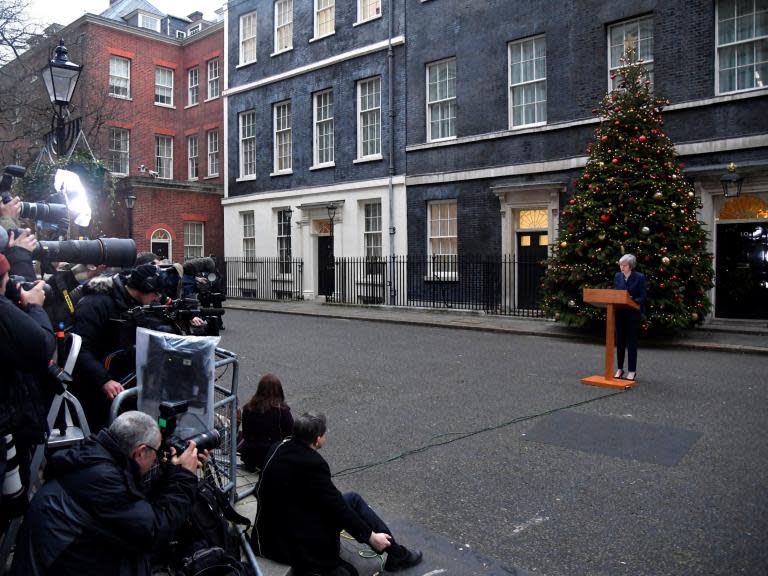How is the Conservative party leader elected? Theresa May on brink after no-confidence vote triggered
Theresa May faces an uncertain future after enough Conservative MPs requested a vote of no confidence to trigger a contest.
Sir Graham Brady, chairman of the backbench 1922 Committee, said the threshold of 48 letters needed to trigger a vote had been reached.
A ballot will be held in the House of Commons on Wednesday evening.
Former cabinet minister Owen Paterson was the latest MP to declare he had submitted a letter.
Others, including leading Brexiteer Jacob Rees-Mogg, submitted letters last month calling for a vote of no-confidence in the prime minister.
Here is everything you need to know about how the ballot will work:
What is the 1922 Committee?
All backbench Tory MPs – those without a position in the government – are represented by the 1922 Committee.
It has an 18-member executive that organises weekly meetings and other business.
How many letters are needed?
A challenge is triggered once 48 Conservative MPs – 15 per cent of the parliamentary party – submit letters of no-confidence to the committee.
If this number is reached the chair of the committee is responsible for arranging a confidence vote in the prime minister.
How long will it take?
Under Conservative rules, the vote is held as soon as possible, on a date decided by the committee chair in discussion with the prime minister.
The last no-confidence vote against a Conservative leader was under Iain Duncan Smith in 2003, when the party was in opposition.
The no-confidence vote was held the day after the chairman announced he had received enough letters.
What is the process?
Once a date is arranged, all Tory MPs can either vote for or against their leader.
If Ms May receives enough support on Wednesday evening, she would remain in office and cannot be challenged again for 12 months.
If she loses, she must resign and is barred from standing in the leadership election that follows.
Ms May’s resignation would lead to an internal Conservative party leadership election, rather than a general election, but the process could still take months.
Candidates wishing to stand in the election have to secure the nomination of two parliamentary colleagues to gain a place on the party’s leadership ballot.
The party – through a first-past-the-post voting system – then holds a series of hustings, each time eliminating one contestant until just two names remain on the ballot.
When David Cameron resigned in 2016, the process to replace him was relatively quick and no vote of the party membership was required.
Ms May was the only candidate remaining after successive challengers withdrew from the race. She became prime minister the same week.
Will it impact Brexit?
If Ms May loses the no-confidence vote, the subsequent leadership race could have a serious impact on the Brexit negotiations.
The deadline for the UK leaving the European Union is 29 March.
If May loses a no-confidence vote and is replaced, a new leader would have to decide how they approach the negotiations, potentially requesting an extension of Article 50.
The remaining EU27 are in agreement over the withdrawal agreement, and have said renegotiations of the text are not possible.

 Yahoo News
Yahoo News 

